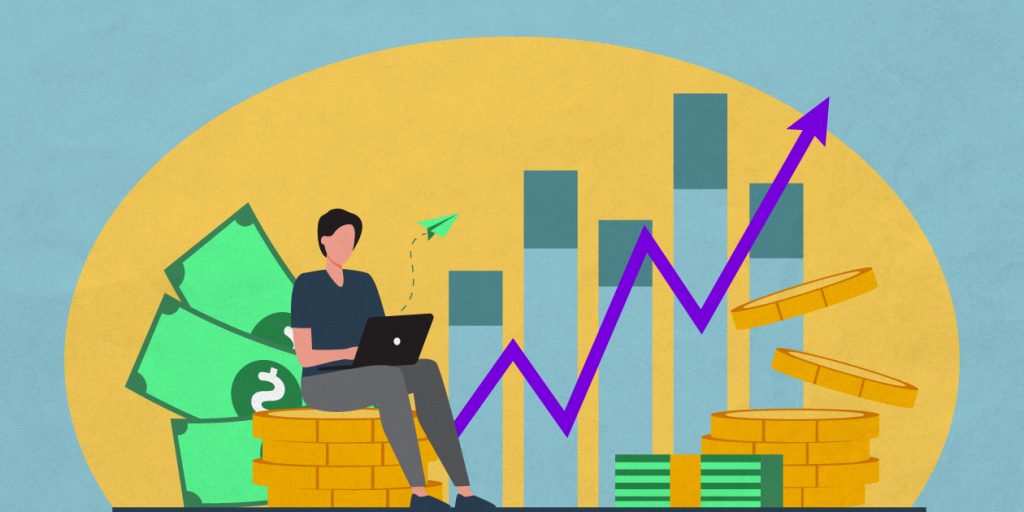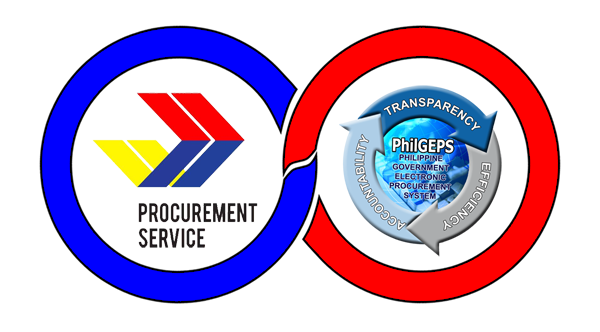
Starting an investment portfolio is an important asset to financial freedom and success. Financial literacy is arguably one of the most important skills to possess if you dream of living a comfortable lifestyle without the worries of finances. One way or another, you wouldn’t want to live paycheck to paycheck and get stuck in the rat race. Investing and diversifying your money with the potential of generating passive income is one of the ways to earn your ticket to financial freedom. In this article, we will talk about the types of investments, some things to consider, and tips, so you can start your investment portfolio in no time. Without further ado, let’s jump right into it.
What is an Investment Portfolio
An investment portfolio is a collection of one’s investments and assets which typically includes stocks, bonds, real estate, cryptocurrency, or any type of income generating asset. Generally, inventors aim to earn and grow a return on their investment in a certain amount of time.
Types of Investments to Start your Portfolio in the Philippines
If you’re still wondering what types of investments you should invest in, here are the types of investments to start your portfolio.
- Stocks
What’s the minimum amount to start investing in stocks? Php5,000.00
Stocks, also known as shares or equities, represent the ownership in a company. When you buy a stock or a share of a company, this makes you a shareholder. Which means, you can say that you own a percentage of the company. Sounds and feels good right?
The stock price depends on the company’s performance and their ability to generate revenue.
There are different causes for a stock price to go up or down, such as company performance, activity, economic conditions, consumer spending, and etc. So it’s important to do research and be attentive to news regarding a company you’re investing in.
You can start investing in stocks by opening a brokerage account through popular stock market platforms such as the Philippine Stock Exchange (PSE), MetroSec, COL financial, Philstocks, and many more.
- Bonds
What’s the minimum amount to start investing in bonds?
Retail Treasury Bonds (RTB): P5,000.00
Corporate Bonds: P50,000.00
Bond investments in the Philippines refer to investing in various types of bonds issued by the Philippine government or corporations. This means, corporations or the government are borrowing money from you. Bond investments are low risk with the assurance of getting paid with a periodical interest rate. Investing your money on bonds is one of the safest investments you can make.
You can start investing in bonds by asking your Bank what fixed-income products they can offer and start investing from there. Another way is by buying bonds at Bonds.ph, or opening a brokerage account from COL financial or ABSCI.
- Cryptocurrency
What’s the minimum amount to start investing in cryptocurrency?
Depends on the minimum purchases from the crypto exchange platform, but you can start with P500 or less.
Cryptocurrency or crypto is a digital currency that utilizes cryptography for security and operates independently of a central authority such as the government or financial institution. Cryptocurrency is based on blockchain technology, which is a decentralized and transparent ledger that performs and records all transactions digitally.
Cryptocurrency shares similar traits with stocks in terms of market structure, technicalities, and volatility. Although, the value of cryptocurrency is more volatile compared to stocks, which requires a lot of research, knowledge, and familiarity.
- Real Estate
You can start investing in real estate by sub-leasing a property.
Or if you’re ready to buy a property, it’s in the 6-8 digit range.
Real estate refers to land properties, structures, or improvements to a property. Real estate encompasses buildings, houses, apartments, and other structural properties, which is considered as a tangible asset that can be bought, sold, or rented for various purposes. Real estate requires large amounts of capital but provides large returns. This requires the purchase of land, building or renovating apartments or buildings, that you can either sell or keep long-term.
You can start investing in real estate in the Philippines by looking for land or property on real estate marketplaces online from Enta, Lamudi, DotProperty, Hoppler, etc.
- Precious metals
Precious metals that are rare such as diamonds, gold, silver, and much more are good investments. These precious metals offer inflationary protection which means they hold their value and don’t depreciate even when the value of a currency goes down. They value an intrinsic value with no risk, and cannot be inflated. But one thing to take into consideration is it’s sometimes difficult to sell precious metals when you want to liquidate them.
- PAG-IBIG MP2
For beginners who want to start out their investment journey, investing in PAG-IBIG MP2 is a great investment. PAG-IBIG MP2 is a savings program is a special voluntary savings facility with a 5-year maturity, designed for active Pag-IBIG Fund members who wish to save more and earn higher dividends, in addition to their Pag-IBIG Regular Savings. The MP2 savings account is open to natural Filipinos, regardless of age, as long as they have 24 months worth of savings prior to their retirement.
You can start investing in MP2 savings through Virtual Pag-IBIG. Once you are issued an MP2 Savings account number, you can start saving,
You may also opt to open an MP2 Savings account at any Pag-IBIG Fund branch by accomplishing and submitting the MP2 Savings Enrolment Form, which you may download by clicking here.
- Franchising
You can start a business franchise with a capital of P40,000 up to P25 million.
Franchising involves legally using the trademark, trade name, and business system of another, more popular company. The franchisor receives a royalty and typically an upfront fee for the license to conduct business under the investor’s name and system. The legally binding agreement that binds the two parties is technically known as the “franchise.” Although the term is more generally used to refer to the business, the franchisee manages. The technique of developing and spreading a brand and franchise structure is known as franchising.
Check the best franchising business opportunities in the Philippines here.
Tips When Starting your Investment Portfolio

- Set goals and a timeline
Setting your goals in starting your investment portfolio is key to understanding what results you aim to achieve. One of the questions you must ask yourself is:
“Is this investment long-term?”
“Is it for retirement?”
“Do I plan to liquidate this investment for future use?”
Understanding your end result will help you steer the direction of your investments and make better informed decisions based on your financial goals.
Another thing to keep in mind is that time is the most important factor in an investment. Investments earn overtime. Which means the more time you have, the greater your returns.
- Do your research on investments
Don’t do investments just because a friend just told you so or because it’s a trend. Doing your own research is an important step in considering investments you want to take. For example, if you plan to invest in the stock market, research about the company’s financial and market performance, how economic conditions affect the company, stock price trends, and other factors that would contribute to a company’s growth and revenue. The more revenue the company produces, the stock prices increase, and vice versa.
- Risks (Appetite and Tolerance)
It is common knowledge that investments aren’t a sure way to success. In every investment, there are risks involved. There are two factors of risk to take into account, and there are risk appetite and risk tolerance.
Risk appetite is the amount of risk you are willing to accept in order for your investments to move ahead towards its objectives.
Risk tolerance is the acceptable level of risks that you are willing to endure given the risks or volatility of your investment.
- Don’t invest money you cannot afford to lose
As it suggests, it is not advisable to invest money that you cannot afford to lose. All investments don’t guarantee returns and not to mention, its risks. Only invest money that you are comfortable losing. This way, your investments won’t be a burden to your financial responsibilities, mental, and emotional health, and avoid impractical and irrational investment decisions.
- Save up for emergencies
Before investing, make sure to save enough money in case of emergencies. Saving up for emergencies prevents you from financial burden from onsets of unexpected expenses that may hurt your finances or affect your investments.
- Diversify your investments
Don’t put all your eggs in one basket. Diversifying your assets or investments protects you from uncertain risks. For example, If one of your investments fails, you have more investments that can potentially grow further than what you have lost initially. This allows you to lower the risk of going bankrupt, giving you more opportunities to take advantage of a volatile market condition.
Disclaimer: This article serves to provide general and basic information about how to start your investment portfolio in the Philippines and does not constitute financial advice. For personalized financial guidance regarding your investment, it is recommended to consult with a certified financial professional who can tailor their advice to your specific needs and circumstances.
Investment Amount
Before we get into details, some general remarks should be made. Regardless of what your total assets are, it is critical to keep track of your numbers. May it be a bond, a mutual fund, or any other investment. This is particularly true if you have to operate on a limited budget, as fixed costs will consume a larger portion of your company’s investment. Remember that investments are different according to company size and capability to shed a specific amount of risk.

Investments
Php 5,000 to Php 60,000
You might use that money to buy individual stock shares, which carry a larger risk but can yield better profits. Individual equities that pay dividends are a wise investment approach. You can choose between getting dividends in cash or reinvesting them in further shares. Some of the firms that operate for the stock market exchange include Col Financial, BPI Trade, GCash, and Investa.
Php 61,000 to Php 180,000
This investment type gives you access to more alternatives, namely more mutual funds. Consider starting with an index fund, which is a sort of mutual fund that monitors a certain market index. Index funds, like ETFs, have passive management, which means they have a reduced cost ratio, which helps to decrease fees. It also provides a broad knowledge of a variety of asset groups. A few firms you can turn to for mutual funds include Seedbox Philippines, Bonds PH, and Sun Life Mutual Funds.
Php 181,000 to 500,000
At this price range, the choices expand, including greater opportunities for real estate investment. While this amount is insufficient to purchase property as a whole, it is plenty to gain a stake in real estate in various ways. An additional alternative is real estate crowdfunding. Real estate crowdfunding systems are able to take investments from authorized and unaffiliated investors.
Depending on the system, investors can also select between loan and capital investments in residential and commercial properties. Debt investments yield annual returns ranging from 8% to 12%. If the property’s value rises, equity investments can give bigger returns. Remember that this form of investment may entail greater risks than typical ventures. Some platforms for this type of investment include Lamudi, Hoppler, Dot Property, and Property 24.
Non-Fixed Amount Investments
Commodities diversify a portfolio and can even provide a form of insurance against price risk farther up the asset value chain in some sectors. Energy commodities such as oil, gas, coal, and material resources all have well-understood market structures and relatively simple financial tools to serve as commerce instruments.
Commodities can provide a more personal perspective in an environment where many financial investments are derivatives, technologies, and options forecasts, with layers of market emotion impacting their performance. Some platforms for this type of investment include eToro, Smart Trading PH, and Shoppable Business for business-to-business transactions.
Choose your investments wisely
It is important to invest in what you are interested in or what you can financially handle. You don’t have to start big in order to invest. Also, it’s okay to ask for advice, but don’t get carried away by social peers in driving your investment decisions. Trust your gut and invest in what you think would best deliver you from your investment decisions and goals. Here’s one more way to earn:
Become a Seller in Shoppable Business
- Access to a large customer base – giving businesses the opportunity to expand their reach and increase sales
- Increased visibility and brand awareness – a platform for businesses to showcase their products/services and potentially attract new customers
- BNPL (Buy now, Pay later) – grow your ASP; buyers/companies can apply for a loan up to ₱150,000.00
Conclusion
Every investment requires in-depth research, knowledge, and decision making. Investing opens a lot of opportunities for financial wealth, but let’s not forget that investments are also vulnerable to risks. Investments isn’t a one way ticket to wealth. There are days where you will win some, and you will lose some, and that’s all part in the process of investing. In addition, investing requires time and it’s important to be rational. Don’t let one loss cloud your vision and judgement in making decisions. With careful analysis, calculations, and sharp decision making, you can navigate your way in reaching your financial and investment goals.









